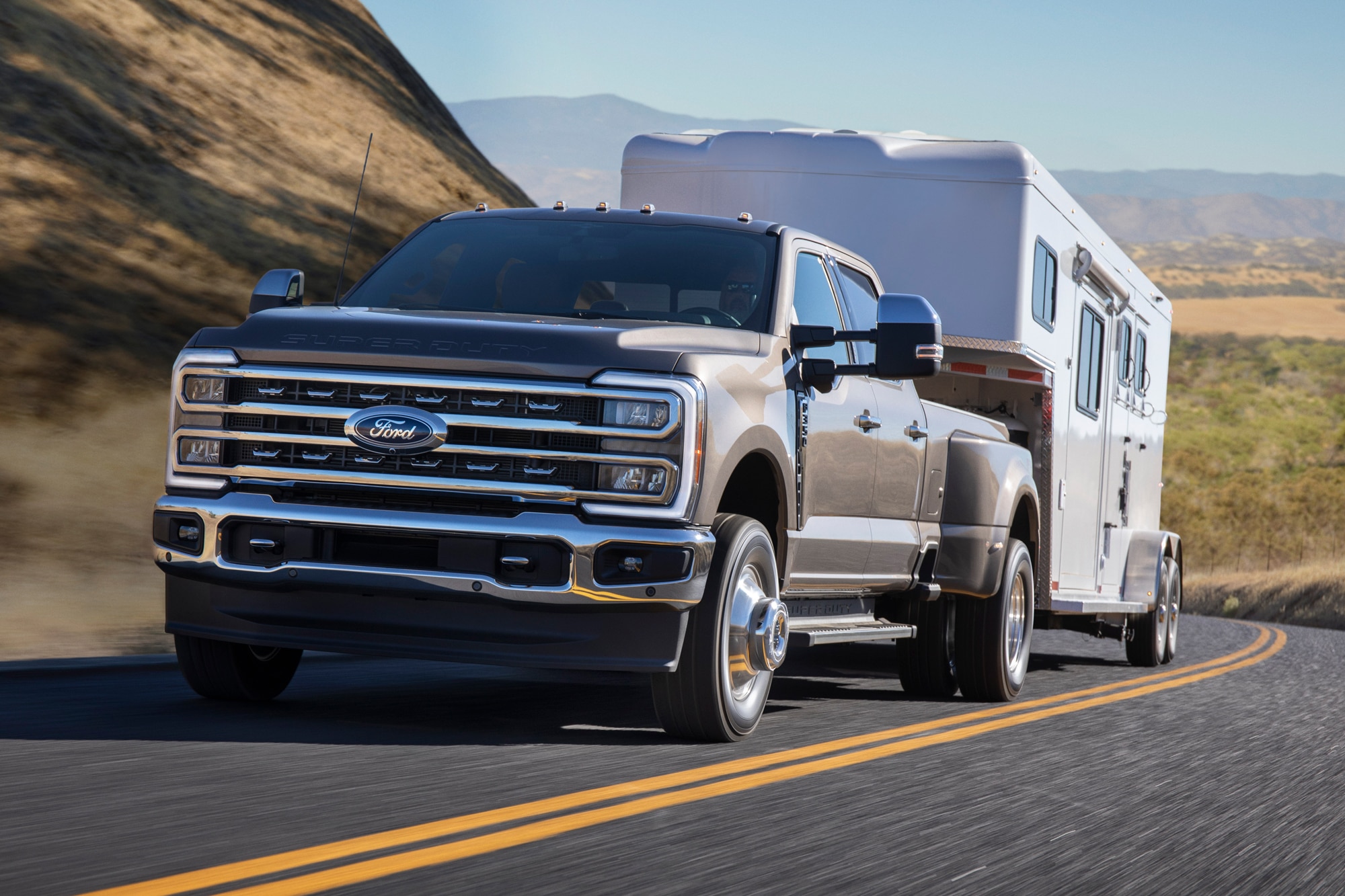How to Tow a Trailer
Here's what you should know about hitching a trailer to your ride.
 Ford
Ford
Towing is a serious business, but it needn’t be difficult. Follow these basic guidelines and towing your trailer should go off without a problem.
Determine How Much Your Vehicle Can Tow
First things first, you need to know how much weight your car, truck, minivan, or SUV can pull. You can find your vehicle's towing capacity on the manufacturer’s website, in the owner’s manual, and sometimes on a sticker on the driver-side door jamb.
You also need to consider the tongue-weight rating, which tells you how much weight the hitch can support. It should be between 9-15% of the gross trailer weight. Then there’s the gross vehicle weight rating (the maximum weight of your vehicle with passengers and cargo plus the tongue weight of a trailer) and the gross combined weight rating (the maximum weight of your loaded vehicle and your loaded trailer). Exceed any of these ratings and you’re asking for trouble.
How to Attach a Trailer to Your Vehicle
Before attempting to connect a trailer to your vehicle, make sure the trailer’s coupler is several inches higher than your vehicle’s hitch to make alignment easy. Next, you’ll need to reverse your tow vehicle so the ball is directly underneath the coupler. Some vehicles offer advanced backup systems with hitch-pointed cameras that make this task child’s play. If yours doesn’t, it’s helpful to have someone stand near the tongue of the trailer to direct you.
Once the two align, you’ll need to lower the coupler—usually by crank—onto the ball and secure the trailer’s coupler latch. Then, connect the safety chains and wiring.
Run a Safety Check
The National Association of Trailer Manufacturers recommends performing a safety inspection prior to trailer towing. The list includes checking the tire pressure, torquing the lug nuts, ensuring the integrity and connection of the wiring harness, testing the lights, and adjusting the chains so they have just enough slack to make turns without dragging on the ground. You should also verify that your trailer license plate is current.
Know the Law About Driving With a Trailer
Each state has specific rules that govern within its boundaries the use of trailers and driving with a trailer. These include speed limits, trailer brake requirements, and maximum widths. For example, Florida requires trailers weighing 3,000 pounds or more to have dedicated brakes, and Iowa allows passengers to ride in travel trailers, fifth-wheel trailers, and pickup campers.
Other Things to Keep in Mind
Some other important considerations include, your vehicle needs more room to brake when it has a trailer in tow. Increase your following distance and prepare to slow sooner than you normally would.
Remember to give yourself enough room when turning. Aiming wide will help you avoid riding over curbs.
Lastly, before taking off, ensure your route can accommodate the width and height of your tow vehicle and trailer. A tight tunnel could ruin your day.
Written by humans.
Edited by humans.
 Mark Elias
Mark EliasMark Elias is an award-winning automotive journalist and photographer who has covered the industry for the past 20 years. Along the way, he has photographed for news agencies, car manufacturers, and Fortune 500 companies. He loves playing and building guitars — but his wife will only let him have five at any one time.
Related articles
View more related articles